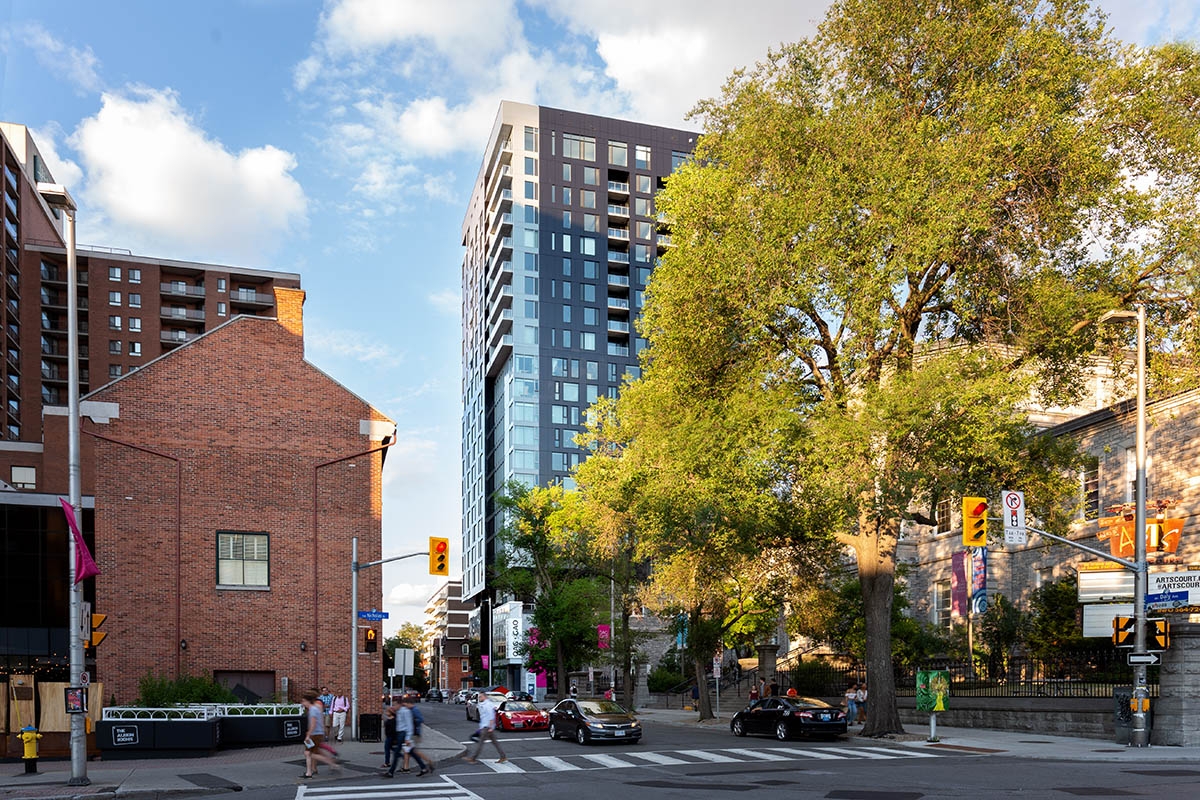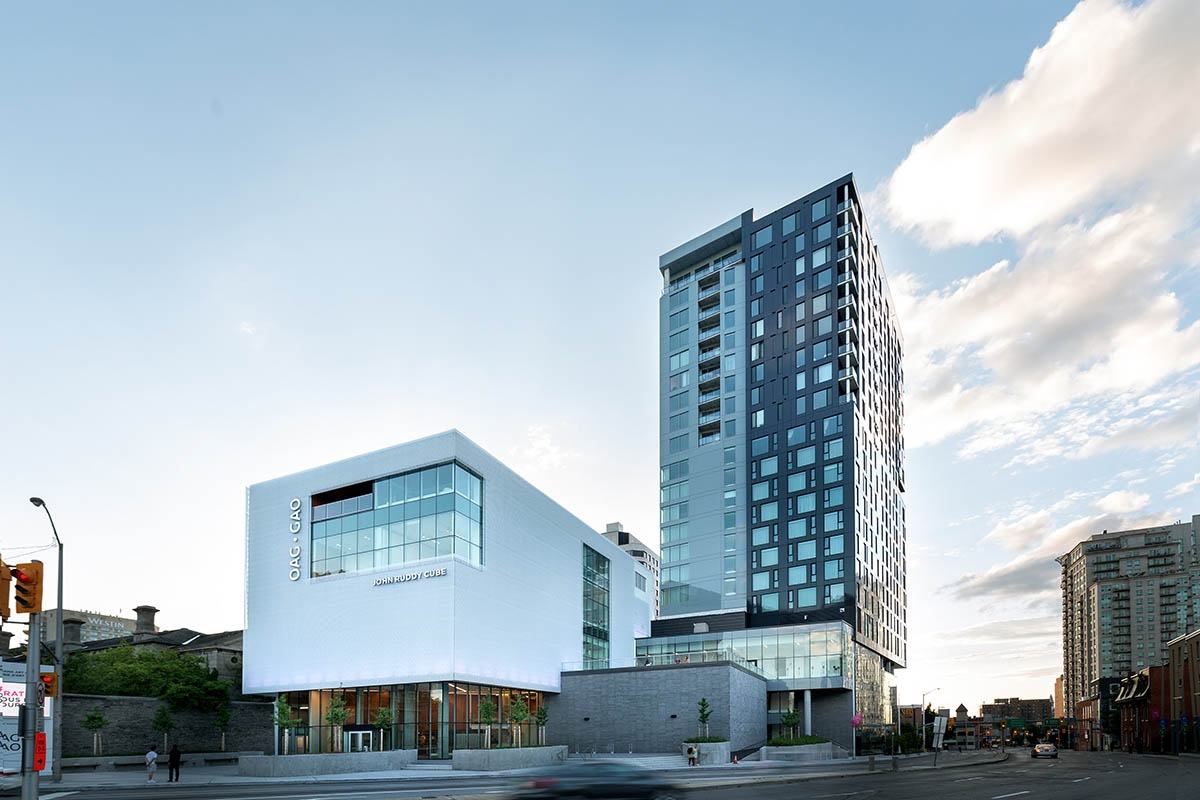
Design integrity in creating coveted real estate
ABOVE: Daly Street view of ArtHaus, one of Ottawa's most successful mixed-use condominium buildings. (Photo: Kevin Belanger)
Collectible Homes Illustrate the Potential Architecture Has on Desirability
In Orlando, Florida, the Golden Oak residential community at Walt Disney Resort has proven to be a remarkable success, which is not surprising given the reputation of the sponsors behind it. What is astonishing is that several owners have purchased multiple residences there. This catapults Golden Oak into the unique category of “collectible real estate” and showcases the power of exquisite design. At first glance, these family homes can be mistaken for traditional Old Florida villa-style residences. On more careful examination, their detail and adherence to strict architectural guidelines shine, making them leaps and bounds ahead of builder tract-home communities. It gives them what I call the “cachet of uniqueness.”
Design and architecture play a vital role in creating iconic real estate. Developers and architects, along with other consultants, come together to design buildings and homes that speak to the environment in which they are built, and also tell a story beyond the bricks and mortar. This connection goes beyond the physical basics of the real estate, enabling the purchaser to see its lasting and ever-growing value. We can equate it to a piece of art one would collect.
The Four Seasons has amassed an incredible following of collectors who acquire residences in their projects all over the world. They consider those residences art pieces because of their level of design and detail. Beyond that, collectors buy into Four Seasons residences because of the outstanding amenities, service, and resident comfort for which the brand is known.
Sometimes the simplicity of the design is the ultimate attraction. For example, 432 Park Avenue is beautifully simplistic and complimented by its busy New York City surroundings. One of the tallest residential buildings in the world, the point tower sits in Midtown Manhattan overlooking Central Park. The art in the beauty of this real estate is that no two suites have the same views, and the window walls offer ever-changing vistas of the city. This building has garnered the attention of collectors around the globe.

ABOVE: View of ArtHaus from Waller Street. (Photo: Kevin Belanger)
In Canada, ArtHaus is one of Ottawa’s most successful mixed-use condominium buildings. The project design incorporated the rich history of the location and the modern art scene it would soon host, and elegantly included residential suites along with a hotel and public art gallery. The master-planning behind this resulted in something so rare that anyone given the opportunity to purchase one of the limited number of suites did so.
Of course, architecture changes with the times, but adding or preserving elements of past styles can enhance timeless design. It might be the minimalism of Brutalist architecture from the 1950s, which was classically contemporary without being refined. A similar example is mid-century modern, which stripped away ornament and focused on design essence. I think of our current style as the era of the detail, with stress on workmanship and adding some of the best features of past eras.
Renowned architect Robert A.M. Stern has added a modern-day take on the classic 1920’s style art deco building showcased in Toronto’s One St. Thomas, and famously in New York’s iconic 30 Park Place, which houses the Four Seasons Private Residences New York. The 265m tall building is wrapped in classic building materials such as limestone and precast concrete, which make the new building appear to stand still in time.
Creating design that evokes the desire of purchasers can be challenging in markets where the product type may not be the first choice for most. In Los Angeles, typically a low-rise market, 8899 Beverly became one of the most desirable new projects the city has seen in decades. The iconic 1960s mid-century modern building was redesigned to incorporate usability and amenities purchasers were looking for. The architects dazzled beyond belief and created concepts with a unique LA appeal. One such feature is the Private Auto Stable positioned in addition to the parking garage. It features 16 showroom-quality private garages designed with custom gunmetal herringbone brick flooring, operable wood sliding private garage doors, black metal-clad columns, and white oak wood wall paneling – perfect for showcasing owners’ classic cars.
Finally, design and architecture sometimes take an unexpected form by layering natural elements to create a substantially different appearance from what one would expect in the given environment. The town of Scottsdale, Arizona, is not known for its vastly green surroundings, as rock, sand and an assortment of desert foliage make up most of the landscape. In the center of it all stands a new-construction building draped with greenery, suggesting an oasis in the desert. Optima Kierland brings a unique concept with this design. The building material itself is commonplace for the area, but the layered-on foliage transforms the exterior. The real magic, however, happens inside the building, as the view from each home transforms it into a picturesque garden suite giving the appearance of ground-floor living. The King project in Toronto provides this same effect with greenery to soften the urban high-rise setting in which it is located.
For developers, bringing a new real estate offering to the marketplace is challenging. Architecture and design have major influences on perceived value. In creating real estate that has the “cachet of uniqueness,” many aspects need to be considered. In general, they embrace the overall experience the purchaser will have and how the physical real estate enhances the story the property tells in its environment. The details speak from themselves. Tell the correct story, and you will find its perceived value is more than you can imagine.













